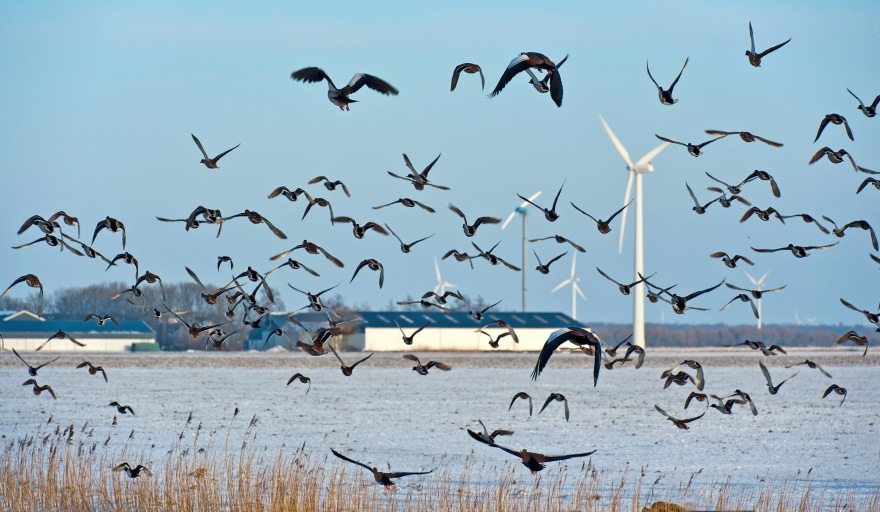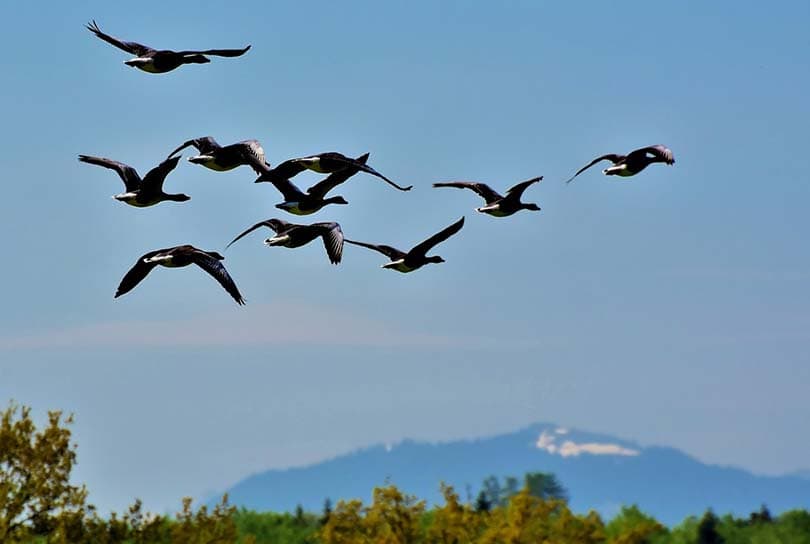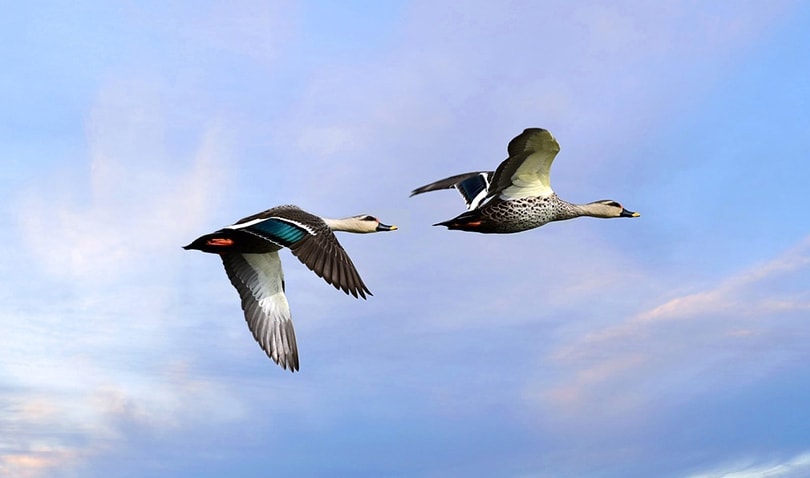Why Do Birds Migrate? 4 Typical Reasons
Last Updated on

Migration means the same thing to different animals, including humans. Many times we’ve seen people move from one country to another in search of better opportunities, food, good weather, etc—and the same applies to animals. They’ll pack and move if they feel like their current situation is no longer favorable or sustainable. Why do birds migrate? Let’s find out.
The 4 Reasons Why Birds Migrate
1. Food Scarcity
Time and time again, researchers have proven that there’s a correlation between the reproductive performance of an animal and nutrition. And to make sure that their findings were airtight, they tested their hypothesis on different mammals and birds.
It was discovered that the number of rations and feeding patterns profoundly influenced the reproductive health of any animal. Furthermore, the absence of certain minerals such as manganese, calcium, and zinc could drastically reduce their fertility.
Besides reproduction, nutrition also plays a critical role in determining how healthy a bird is. It is assumed that about 90% of bird diseases are avoidable if their diets have all the essential minerals required by the body.
Even though ornithologists are still not certain about the nutritional requirements here, they are sure a dry seed diet alone cannot fortify the avian immune system. Some people argue that a ‘vitamin enriched’ seed could do the job, but nutritionists specializing in animal diet disagree. They say the seeds will still lack the essential minerals, which include amino acids, iodine, vitamin A/B, and calcium.
It’s easy to jump to the conclusion that birds are not intelligent because they have small brains, but they are really smart. They have unique tastes and crave different foods. That’s why they’ll migrate even if whatever’s available can be eaten as a substitute to whatever’s missing.

2. Climate Change
Climate change has affected the world in so many different ways. We believe desertification, flooding, and increasing temperatures are the reasons why habitats are constantly changing or even disappearing.
It’s becoming increasingly more difficult for birds to nest or forage for food because the rising sea levels keep flooding their breeding grounds and sweeping away their babies. And if they move to areas that are far away from any water body, they still find themselves dealing with inadequate food supply due to a drastic increase in population and desertification.
Change in the vegetation structure of different habitats is yet another effect caused by climate change. Just look at the Siberian tundra, for example. It used to be a suitable breeding ground for goose species, but they are no longer there. The increasing temperature forced the permafrost soil to thaw, consequently inviting the forest vegetation into the tundra regions. Even though that green carpet is aesthetically pleasing to humans, geese hate it because it makes breeding virtually impossible.
3. Invasion By Predators
Just like birds, other animals migrate for different reasons. So even if birds in a particular region were not looking to migrate, they would still have to if a group of predators showed up. Nobody wants to be around people who disrupt peace, and birds are no different. Especially if the said predators are looking to feed on their young ones or the eggs that they’ve laid. Migrating in this instance is meant to give their babies a better chance of surviving and reaching maturity.
4. Diseases
Some habitats are home to many different species of birds. They usually do live harmoniously, which is a good thing, except for the fact that the large numbers make them susceptible to various diseases and parasites. Birds know migrating is the only way of preventing such diseases from devastating their breeding colonies. The fewer there are, the less the risk of contracting or spreading a disease.
What Are The Risks Of Migration?
We’ve all witnessed birds colliding with different obstacles mid-flight, and most of those collisions end up being fatal. Even if the bird is lucky enough to survive, it takes days to heal and they won’t be able to protect themselves or escape should a predator show up.
Exhaustion and starvation are the other risks they are facing. We’ve learned that some birds can cover more than 55,000 miles during migration, rendering them exhausted and less wary of potential threats, more so if the bird is using a flight path that’s riddled with natural disasters such as wildfires and hurricanes, or has inadequate food supplies.
- See also: 20 Types of Duck in Colorado

Where Do Birds Migrate?
If we had to classify them, we’d say there are local, regional, and international flyers. The local flyers will stay within borders. They’ll move from one state to the next, then go back to their primary home. Regional flyers will cross borders and explore opportunities in countries that are close to us like Mexico and Canada.
But if you spot an international flyer, give him or her some food and water, because they are known to travel thousands of miles before they head back home. They even travel across continents, if they have to.
For the record, birds don’t always follow the same route while migrating. It all depends on what they are looking for, and what their instincts are telling them. Sometimes their instincts fail them and they quickly realize that the grass isn’t greener on the other side.

Conclusion
Migrating is part and parcel of a bird’s lifestyle, however, there are a couple of things that could help them migrate successfully. For example, you could place bird-feeders outside for them to refuel on their way to their final destination. Or, raise awareness on the impact of climate change, and what we could do to fight it. Whatever little contribution you make, will go a long way in ensuring we save our migrating birds.
Featured Image Credit: Marijs, Shutterstock
About the Author Robert Sparks
Robert’s obsession with all things optical started early in life, when his optician father would bring home prototypes for Robert to play with. Nowadays, Robert is dedicated to helping others find the right optics for their needs. His hobbies include astronomy, astrophysics, and model building. Originally from Newark, NJ, he resides in Santa Fe, New Mexico, where the nighttime skies are filled with glittering stars.
Related Articles:
10 Types of Hummingbirds in Arkansas (With Pictures)
8 Types of Hummingbirds in Nebraska (With Pictures)
5 Types of Hummingbirds in Idaho (With Pictures)
3 Types of Hummingbirds in Mississippi (With Pictures)
8 Types of Hummingbirds in Kansas (With Pictures)
5 Types of Hummingbirds in West Virginia (With Pictures)
5 Types of Hummingbirds in Ohio (With Pictures)
Where Do Nuthatches Nest? Nuthatch Nesting Habits Explained
